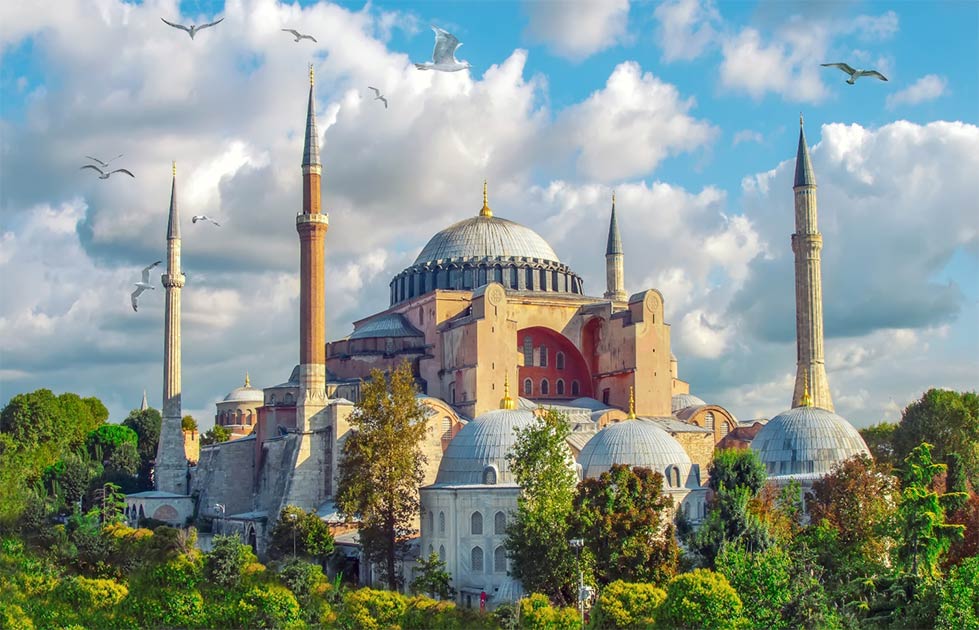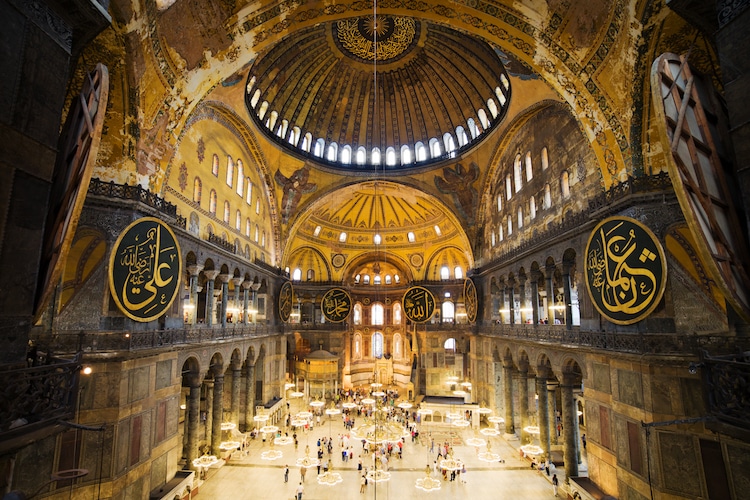ARCHITECTURE THOUGHOUT THE HISTORY II
The 5th century is defined by the decline os the roman empire. The construction of Roman public buildings was
practically paralyzed. But the christianization of the empire opened th new era Thee Middle Ages, witch changed compleatly the architecture. The greeck and roman architecture disaperared since the Renaissance.
With the Middle Ages the Byzantine started, architectural Byzantine is centred in simple exteriors but intense interiors. Hagia Sophia is the perfect example of byzantine, it represents the union between the Empire and the Church.

Hagia Sophia also symbolizes the heaven with it’s famous dome. The Byzantine is an style full of simbolism.

The cities started to be bigger, and new cities develop in smalerl areas compared to the past, all this was with the aim of doing this new cities easier to defend. Taking care of all said before, the militar architecture started to be develop faster.

After this and the fall of the roman empire the govewrnment system is transformed to a pyramidal system of
vassalage, with duchies, marquisates… This is how the pre-romanesque started. This style is marked by the different kingdoms of this epoch.
The lombards were Romanized populations who converted to Christianity. They had not any traditionso they adquired an uniform style but with a huge symbolisim and with some similarities with the roman style.

The visigods bring an ecclesiastical architecture that was developed to takes up the model of the traditional
Roman basilica with a caracteristis plan line. Their buindings werwn’t large except for the apses, where barrel vault o quarter sphere were common.

The carolingian tried to emulate the classic styles such as the roman one. For the firts time after hubreds palaces and other type of monumental buindings were built.

The saxons dedicated themselft to build religious buildings such us cathedrals with an style collected from the carolingians but with additions, for example the tribunes or galeries.
